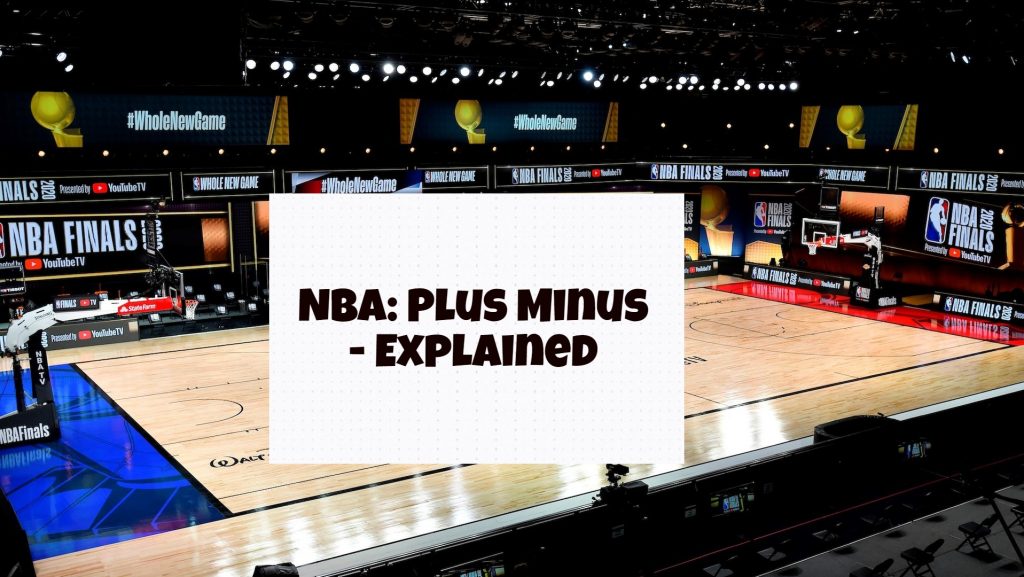Through 75 years of NBA, basketball experts continuously found different ways to measure a player’s greatness. Surprisingly, many of them can now measure how valuable a player could be. One of these measuring systems is the Plus/Minus metric stat. If you haven’t heard of it yet, then today, we will be teaching you what Plus/Minus means in the NBA.

What Does The Plus/Minus Metric Means?
Plus/Minus, commonly known as +/-, is an NBA score-based metric given to a certain player depending on the team’s performance. It was first introduced during the 2007-2008 season and has been an impactful analytics measurement in the league. A Plus (+) measures how much a team scores while that player is on the court. Meanwhile, a minus (-) measures how many points the team allows when that same player is on the court.
To put it simply, if a player has a +3 Plus/Minus stat, it means his team outscored the opposing team by 3 points whenever he is on the court. If the player got a -3 Plus/Minus, it means his team got outscored by the opposing team by 3 points.
Who Holds the Highest Plus/Minus This Season (2021-2022)?

After the season, the current holder for the best plus/minus (PM) is no other than the Boston Celtics superstar, Jayson Tatum. Throughout 76 games, he held on to a +667 PM. Coming in second is the Phoenix Suns’ defensive guard, Mikal Bridges (576), followed by the greatest shooter of all time, Steph Curry (507).
The Relevance of Plus/Minus in NBA
Plus/Minus in the NBA is a general stat used to measure a player’s contribution to the team. Though, to be honest, it is a bit biased and slightly unreliable. It is too broad to be used as a factor to decide whether the basketball player is playing great or not. Let’s say a very talented athlete who plays for a trash team (e.g. 2005 Kobe Bryant) matches up against a contender, then obviously they’re going to be easily outscored. Most likely, that player will be getting a minus (-) stat. On the other hand, if a mediocre player plays for a team with an outstanding roster, chances are they’re going to outscore their opponents with or without him on the floor. Either way, that would result in a plus (+) on his side. Can you see the flaw now?
Because of that, several basketball analysts and experts decide to narrow it down to various metric stats similar to the traditional Plus/Minus system. Below are the most commonly used Plus/Minus spinoffs created by some of the best minds in basketball.
OTHER NEWS: Nuggets’ Nikola Jokic Named the 2022 NBA Kia MVP
-
Defensive Plus/Minus (DPM)
A DPM is a plus/minus spinoff that measures the point difference per 100 possessions whether the player is on or off the court. The DPM is used to measure the defensive value of the said player.
-
Net Plus/Minus (NPM or Roland Rating)
Net Plus/Minus (NPM) is a combination of the Offensive and Defensive Net Plus/Minus of a certain player. To easily understand, this is how it works:
Offensive NPM (per 100 possessions)
A = Total points scored by the team when the player is ON the court, say 120
B= Total points scored by the team when the player is OFF the court, say 90
Offensive NPM = A-B
Offensive NPM = 120-90 = 30
Defensive NPM (per 100 possessions)
C = Total points allowed by the team when the player is ON the court, say 100
D= Total points allowed by the team when the player is OFF the court, say 92
Offensive NPM = C-D
Offensive NPM = 100-92 = 8
Actual NPM (per 100 possessions)
Actual NPM = Offensive NPM – Defensive NPM
ANPM = 30 – 8 = 22
-
Real Plus/Minus (RPM)
The RPM is used to measure a given player’s average impact in net point differential per 100 offensive and defensive possessions.
-
Box Plus/Minus (BPM)
A BPM is very much like the original Plus/Minus (PM), only it is used to estimate the player’s contribution in points above league average per 100 possessions played. The league average is defined as 0.0, meaning it still starts from the bottom.
Feel free to share your thoughts in the comments below. For more content, stay with us, here at Spiel Times.
OTHER NEWS: 2022 NBA Finals (Schedules, Odds, Predictions)
Make sure you subscribe to our push notifications and never miss an update from the world of video games, cinema, and sports. You can also follow us on Twitter @spieltimes for the latest PS5 restock and drop. Until next time, Stay Safe and Happy Gaming!
